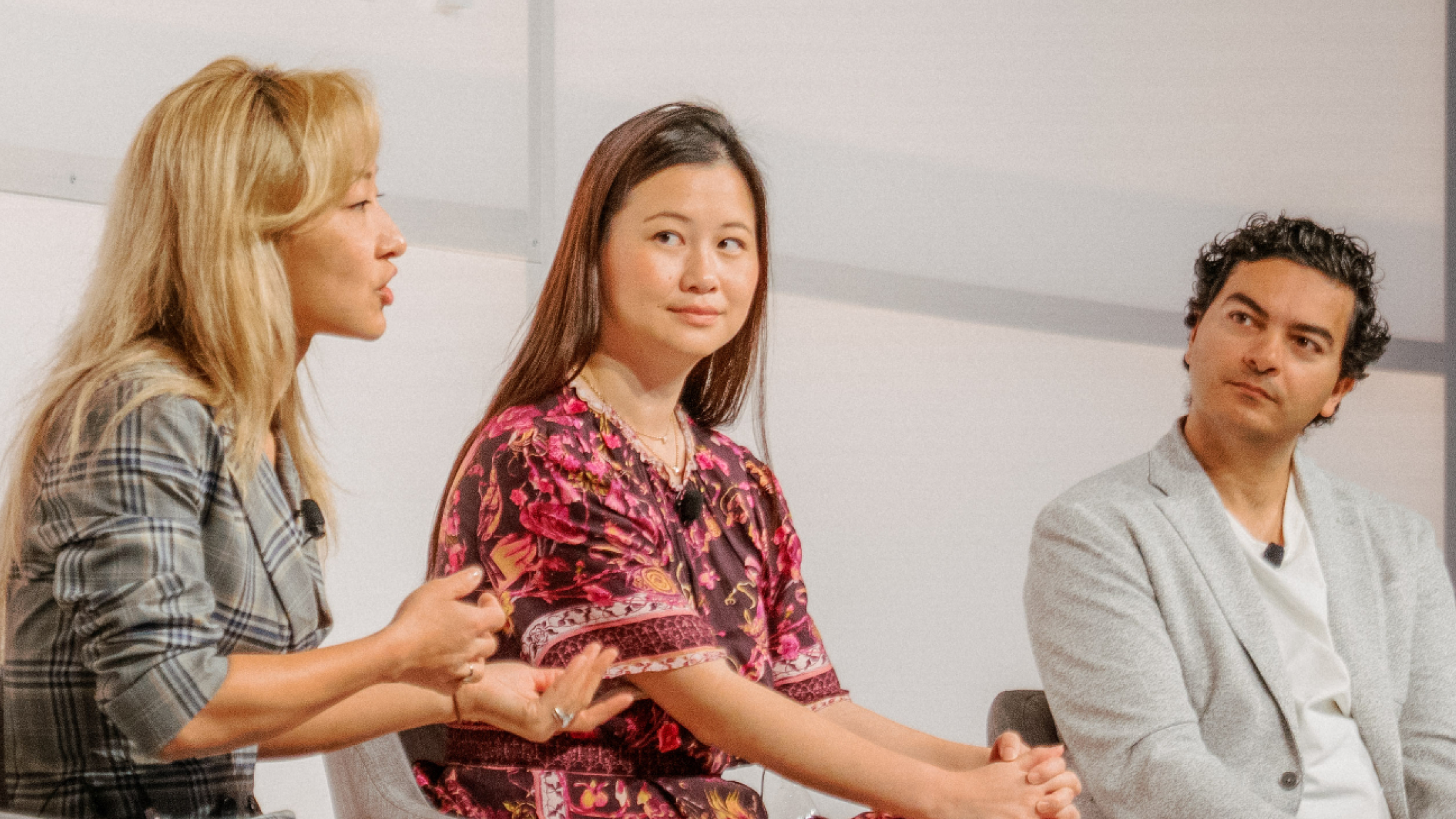How emerging managers can win LP trust — and what founders can learn

Why this conversation matters
Most of Mercury’s readers are builders: people focused on launching and scaling companies. But this session, hosted by Coolwater Capital, flipped the perspective. Mercury’s CEO, Immad Akhund, joined Graham Pingree from Cendana Capital to talk about what it takes to launch and grow a venture capital fund.
For founders, it’s a chance to see how “the other side of the table” thinks. For emerging managers, it’s a playbook on how to position your track record, construct a portfolio, and set up the operational backbone that institutional LPs expect.
Turning a scattered track record into an institutional one
When Immad transitioned from SPVs and YC demo-day funds to a rolling fund, and eventually to a $26M institutional Fund I, the key was how he packaged his history.
Instead of handing LPs a raw list of 200+ angel investments, he grouped them into two-year “vintage” buckets. Each bucket looked like a small fund, complete with TVPI, DPI, number of positions, and sector mix. This structure made it easy for LPs to benchmark performance against peer funds.
As Graham put it, LPs don’t want to untangle spreadsheets of every deal you’ve ever done. They want a clear, fund-like story that makes past performance relevant to the strategy you’re pitching today.
Lesson for founders: No investment is made in a vacuum — your company is part of a larger portfolio. And so if you do your homework on an investor and find out that they’re already fully allocated within your space, it will benefit all parties to save that outreach for another time. Additionally, VCs are continually comparing themselves with peer funds, so understanding where those funds have invested can provide important context to how you position your product.
Portfolio construction: Balancing breadth with conviction
Immad’s final strategy was 60 companies: most as non-lead checks around $150K, with a handful of larger “conviction” bets of $500K–$1M.
From Cendana’s perspective, that balance works. While many seed funds target 25–40 companies, today’s tougher graduation rates from seed to Series A mean a bit more diversification can help. At the same time, too many positions — 100 in Immad’s early draft—would stretch bandwidth and dilute impact.
“Sixty, with a few concentrated bets, feels workable,” Graham explained. “It gives flexibility without overwhelming the team.”
Lesson for emerging managers: Portfolio math is personal. The right number depends on fund size, sectors, and style, but make sure your bandwidth matches your ambition.
Lesson for founders: The same trade-off shows up in product roadmaps: focus enough to go deep, but keep enough breadth to adapt when markets shift.
Fundraising: Momentum flips once you land an anchor
Immad approached his fundraise much like a founder raising a venture round. The sequence was deliberate:
- Prepare the data. Clean the track record and package it into vintages.
- Iterate with friendlies. Share the deck with other GPs and high-net-worth individuals to gather feedback.
- Prime the network. Let potential references know the strategy before LPs start calling.
- Cluster meetings. Run a concentrated 2–3 week sprint to build momentum.
Early commitments from high-net-worth individuals helped, but the inflection point came when Cendana came in as the first institutional LP. From there, the process shifted from “How do I get the first yes?” to “How do I manage allocation across interested LPs?”
Lesson for founders: Anchor commitments change everything. Make sure your early outreach sets you up for that moment. Find out whether an investor you’re targeting is a lead or follow-on investors; i.e., their timing tendencies on writing a check for an early adopter, versus a product with more momentum, and how that fits with your company.
Standing up the ops that signal readiness
Institutional LPs look beyond returns. They want to see that you’ve already built the scaffolding of a fund. Immad lined up:
- Counsel: Cooley
- Back office: Navigation
- Audit/tax: Frank Rimerman
- Banking: Mercury Fund Banking
Having high-quality service providers in place sent a clear message: the fund was ready to scale responsibly.
On audits, Graham noted that Cendana typically requires audited financials. While very small funds sometimes get exceptions, if you want to raise from institutional LPs rather than dozens of family offices, an audit is part of the cost of entry.
Lesson for founders: This is the VC version of showing clean books, reliable metrics, and a real data room before you raise.
Mercury works with an array of partners, including Carta, VectorAIS, and Sydecar. Explore our full roster.
The operator-GP edge (and its guardrails)
Running Mercury gave Immad two advantages: access and credibility. With 40% of early-stage startups using Mercury, founders already knew and trusted the brand, making allocations easier to secure. His investing also built thought leadership that helped Mercury’s own visibility.
But Graham stressed the importance of guardrails. LPs worry about whether a GP can run both a company and a fund well. Immad made it work by:
- Keeping his fund strategy collaborative (not leading rounds).
- Partnering with Yash, a full-time fund manager who runs reporting and LP relations.
- Being explicit about what support portfolio companies could and couldn’t expect.
Lesson across the board: Operators can be strong GPs when the strategy plays to their strengths and they staff the fund with dedicated support. For founders, it’s critical to find a co-founder who can help drive operations and build confidence for investors.
What LPs are optimizing for in today’s market
Cendana’s current lens includes:
- Smaller, flexible vehicles. They give GPs room to adapt check size and style without being locked into rigid ownership math.
- Slightly broader portfolios. Lower graduation rates from seed to Series A mean it’s important to have more “shots on goal.”
- Clear access advantages. Operator-GPs, differentiated sector focus, or accelerators that truly stand apart.
Accelerators: location and differentiation matter
Y Combinator is in a category of its own, and for good reason. Replicating its network and brand is almost impossible. With a few exceptions — like Entrepreneur First in London — accelerators outside the Bay Area have struggled to gain traction.
The ones that work succeed by being highly differentiated. HF0, for example, runs a residency model where founders live and work together. The Thiel Fellowship built a brand around skipping college to launch companies. Neo intentionally keeps its cohorts small and curated.
Accelerators can also provide unique value to startups when their educators are proven builders who are sharing insights based on first-hand experiences, rather than repurposing content.
The common thread: They aren’t “YC lite.” They target founders who wouldn’t otherwise join YC and offer something unique enough to stand on its own.
Practical checklist for emerging managers
- Package your track record into vintages that look like funds.
- Define your strategy: check size, number of positions, conviction plan.
- Name your service providers: counsel, audit, back office, banking.
- Prime your network so references are prepared.
- Resource the fund with at least one full-time partner or manager.
- Anchor your fundraise with one institutional LP to flip momentum.
Closing thought: What founders can take away
For founders, this conversation wasn’t just about fund mechanics. It’s about trust. LPs back managers the same way VCs back startups: based on clarity of strategy, clean operations, strong networks, and credible track records.
The lesson is universal: Whether you’re raising a seed round or a first-time fund, the way you package your story, operationalize discipline, and prime your network can make all the difference.



